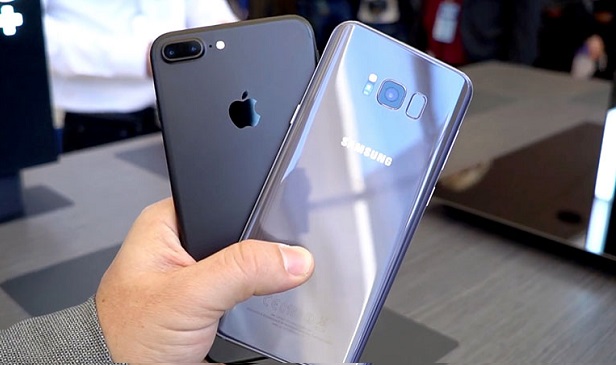Samsung Electronics and Apple remained the top two semiconductor chip buyers in 2017, representing 19.5 percent of the total worldwide market, according to Gartner, Inc. Samsung and Apple together consumed $81.8 billion of semiconductors in 2017, an increase of more than $20 billion from 2016.
This is the seventh consecutive year, in which both Samsung and Apple remains the top two semiconductor chip buyers. In the last year, both companies were representing 18.2 percent of the total worldwide market in 2016.
“Samsung Electronics and Apple not only retained their respective No. 1 and No. 2 positions, they also radically increased their share of semiconductor spending through 2017,” said Masatsune Yamaji, principal research analyst at Gartner “These two companies have held on to the top positions since 2011 and they continue to exert significant influence on technology and price trends for the whole semiconductor industry.”
Recently, Samsung has also attained the 1st position for the largest memory supplier, a position once sat upon by Intel.
Eight of the top 10 companies in 2016 remained in the top 10 in 2017, with the top five chip buyers remaining in the same positions (see Table 1). LG Electronics returned to the top 10 and was joined by newcomer Western Digital, which grew its semiconductor spending by $1.7 billion in 2017. BBK Electronics rose one place to sixth position, increasing its semiconductor spending by $5.7 billion.
Table 1. Preliminary Ranking of Top 10 Companies by Semiconductor Design TAM, Worldwide, (Millions of Dollars)
| 2016 Ranking | 2017
Ranking |
Company |
2016 |
2017 |
2017 Market
Share (%) |
Growth (%) 2016-2017 |
| 1 | 1 | Samsung Electronics | 31,426 | 43,108 | 10.3 | 37.2 |
| 2 | 2 | Apple* | 30,390 | 38,754 | 9.2 | 27.5 |
| 3 | 3 | Dell | 13,544 | 15,702 | 3.7 | 15.9 |
| 4 | 4 | Lenovo | 13,384 | 14,671 | 3.5 | 9.6 |
| 5 | 5 | Huawei | 10,792 | 14,259 | 3.4 | 32.1 |
| 7 | 6 | BBK Electronics | 6,411 | 12,103 | 2.9 | 88.8 |
| 6 | 7 | HP Inc. | 8,906 | 9,971 | 2.4 | 12.0 |
|
8 |
8 |
Hewlett Packard Enterprises |
6,124 |
7,199 |
1.7 |
17.5 |
| 11 | 9 | LG Electronics | 5,162 | 6,537 | 1.6 | 26.6 |
| 13 | 10 | Western Digital | 4,470 | 6,210 | 1.5 | 38.9 |
| Others | 212,906 | 251,206 | 59.9 | 18.0 | ||
| Total | 343,514 | 419,720 | 100.0 | 22.2 |
TAM = total available market
Source: Gartner (January 2018)
A significant price increase of DRAM and NAND flash memory had a big impact on semiconductor buyers’ ranking through 2017. Most original equipment manufacturers (OEMs), even the big ones, could not avoid the risk of a memory chip shortage and rise of memory prices through 2017. Supply shortages occurred not just in the memory IC market, but also in other semiconductor chip markets, such as microcontrollers and discrete, as well as in the passive component market, which benefited the suppliers but troubled the OEMs. On the other hand, successful OEMs are often differentiating their products with their own captive silicon solutions. The increase in OEMs’ captive chip spending is a great risk for commercial chip vendors’ future growth.
Semiconductor spending by the top 10 OEMs increased significantly, and their share reached 40 percent of the total semiconductor market in 2017, up from 31 percent 10 years ago. This trend is expected to continue, and Gartner predicts that, by 2021, the top 10 OEMs will account for more than 45 percent of total global semiconductor spending.
“With the top 10 semiconductor chip buyers commanding an increasing share of the market, technology product marketing leaders at chip vendors must focus on their leading customers,” said Mr. Yamaji. “They will need to prioritize direct sales and technical support resources to these top customers by exploiting online technical support capabilities and outsourcing the support for long-tail customers to third-party partners and distributors.”
Gartner clients can get more information from “Market Insight: Top 10 Semiconductor Chip Buyers, Worldwide, 2017 (Preliminary)”.








